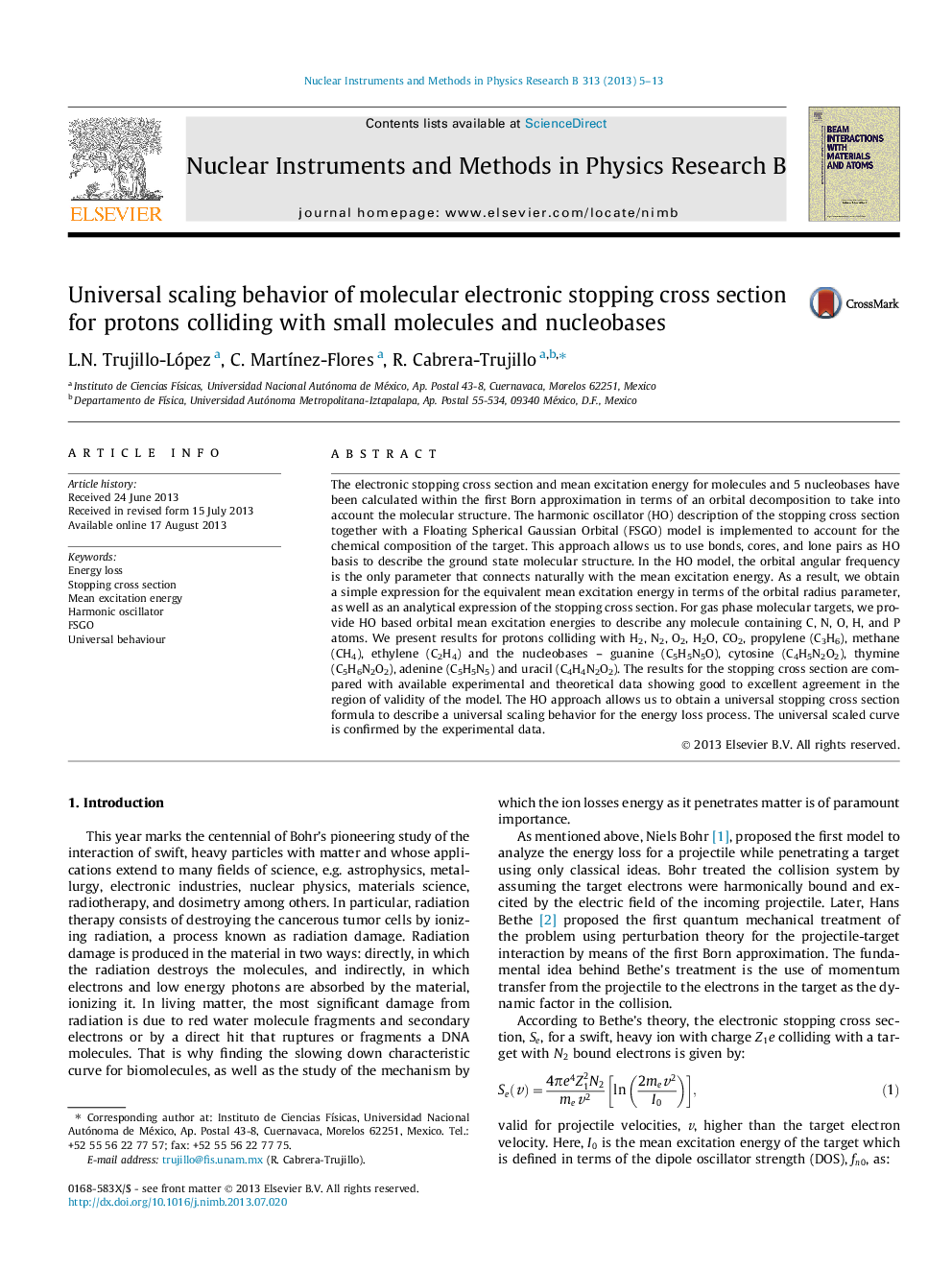| Article ID | Journal | Published Year | Pages | File Type |
|---|---|---|---|---|
| 1681227 | Nuclear Instruments and Methods in Physics Research Section B: Beam Interactions with Materials and Atoms | 2013 | 9 Pages |
The electronic stopping cross section and mean excitation energy for molecules and 5 nucleobases have been calculated within the first Born approximation in terms of an orbital decomposition to take into account the molecular structure. The harmonic oscillator (HO) description of the stopping cross section together with a Floating Spherical Gaussian Orbital (FSGO) model is implemented to account for the chemical composition of the target. This approach allows us to use bonds, cores, and lone pairs as HO basis to describe the ground state molecular structure. In the HO model, the orbital angular frequency is the only parameter that connects naturally with the mean excitation energy. As a result, we obtain a simple expression for the equivalent mean excitation energy in terms of the orbital radius parameter, as well as an analytical expression of the stopping cross section. For gas phase molecular targets, we provide HO based orbital mean excitation energies to describe any molecule containing C, N, O, H, and P atoms. We present results for protons colliding with H2, N2, O2, H2O, CO2, propylene (C3H6), methane (CH4), ethylene (C2H4) and the nucleobases – guanine (C5H5N5O), cytosine (C4H5N2O2), thymine (C5H6N2O2), adenine (C5H5N5) and uracil (C4H4N2O2). The results for the stopping cross section are compared with available experimental and theoretical data showing good to excellent agreement in the region of validity of the model. The HO approach allows us to obtain a universal stopping cross section formula to describe a universal scaling behavior for the energy loss process. The universal scaled curve is confirmed by the experimental data.
